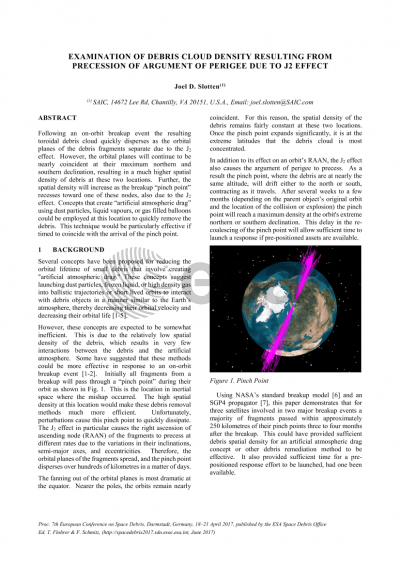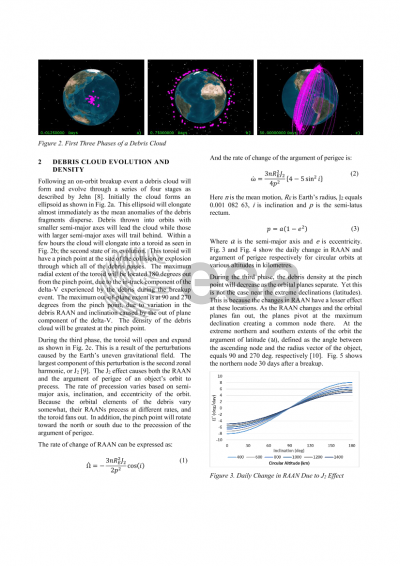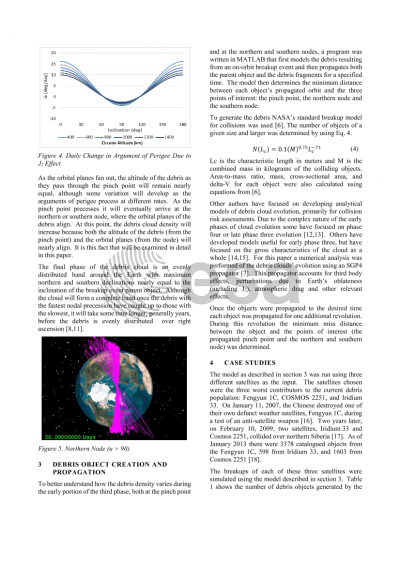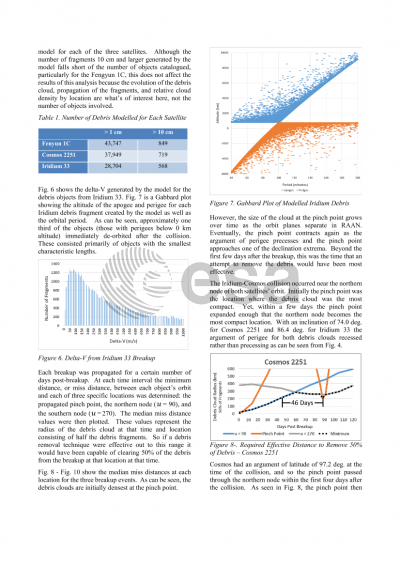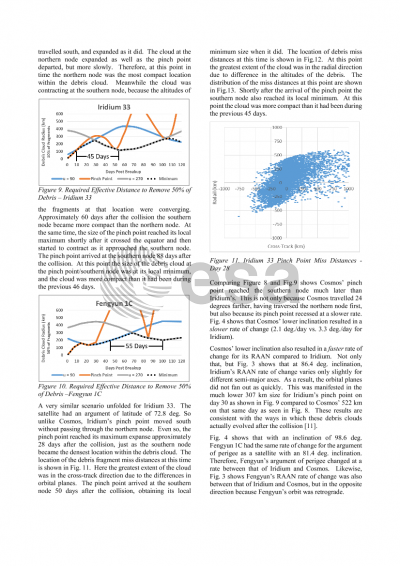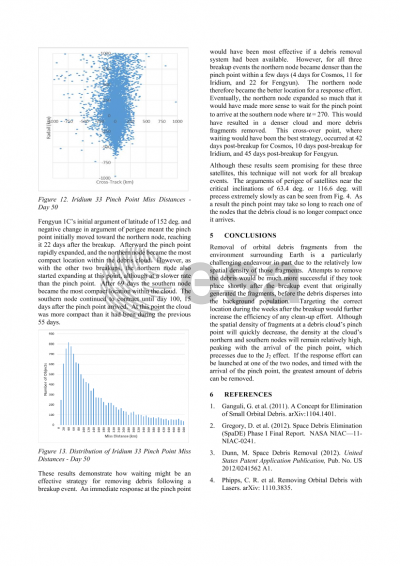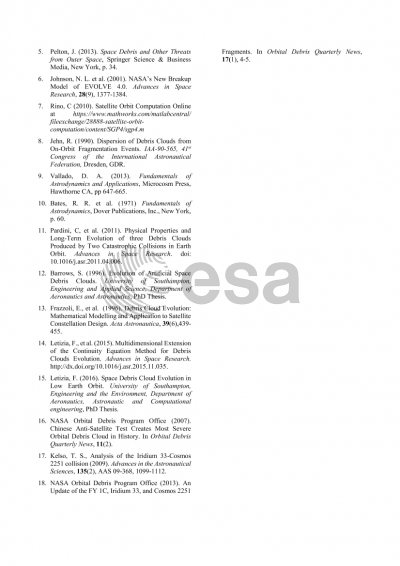Document details

Abstract
Several concepts have been proposed for reducing the orbital lifetime of small debris that involve creating “artificial atmospheric drag.” These concepts suggest launching dust particles, liquid vapors, or gas filled balloons into ballistic trajectories or short lived orbits to interact with debris objects in a manner similar to the Earth’s atmosphere, thereby decreasing their orbital velocity and decreasing their orbital life.
However, these concepts are expected to be highly inefficient. This is due to the relatively low spatial density of the debris, which results in very few interactions between the debris and the artificial atmosphere. Some have suggested that these methods could be effective in response to an on-orbit breakup event. Initially, all fragments from a breakup will pass through the location in inertial space where the mishap occurred. The high spatial density at this location would make these methods much more efficient. Unfortunately, perturbations cause this pinch point to quick spread. The J2 effect in particular causes the right ascension of ascending node of the fragments to precess at different rates due to the variations in their eccentricities and semi-major axes. As a result, the location where all the fragments return to the breakup altitude spreads out over thousands of kilometers in a matter of days.
Fortunately, the J2 effect also causes the argument of perigee of the fragments to precess. In this way the point in each fragment’s orbit where it passes through the breakup altitude will drift toward the orbit’s max declination. After several days to a few weeks (depending on the parent object’s original orbit and the location of the collision or breakup) the pinch point will be positioned at the parent object’s max declination where variations in the right ascension of ascending node are almost irrelevant. This delay in the re-coalescing of the pinch point will allow sufficient time to launch a response if prepositioned assets are available.
Using NASA’s standard breakup model and an SGP4 propagator, this paper will demonstrate that for a variety of orbits and breakup locations, a majority of fragments from a collision or breakup event will pass within a few tens or hundreds of kilometers of a given point in inertial space. This will provide sufficient debris spatial density for an artificial atmospheric drag concept or other debris remediation method to be effective. It also provides sufficient time for a prepositioned response effort to be launched.
Preview
